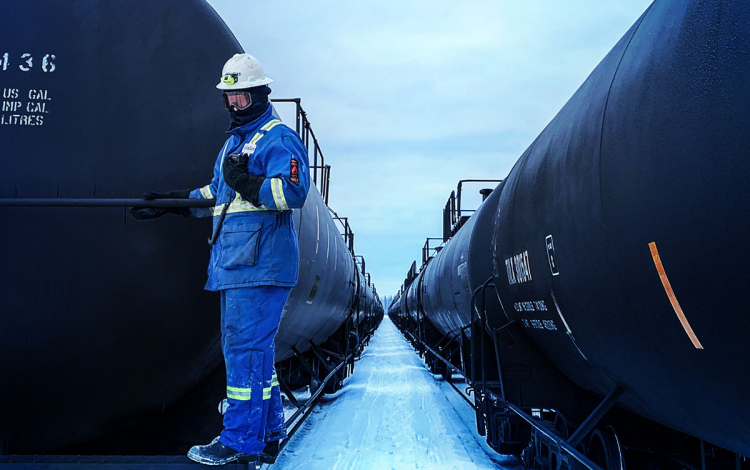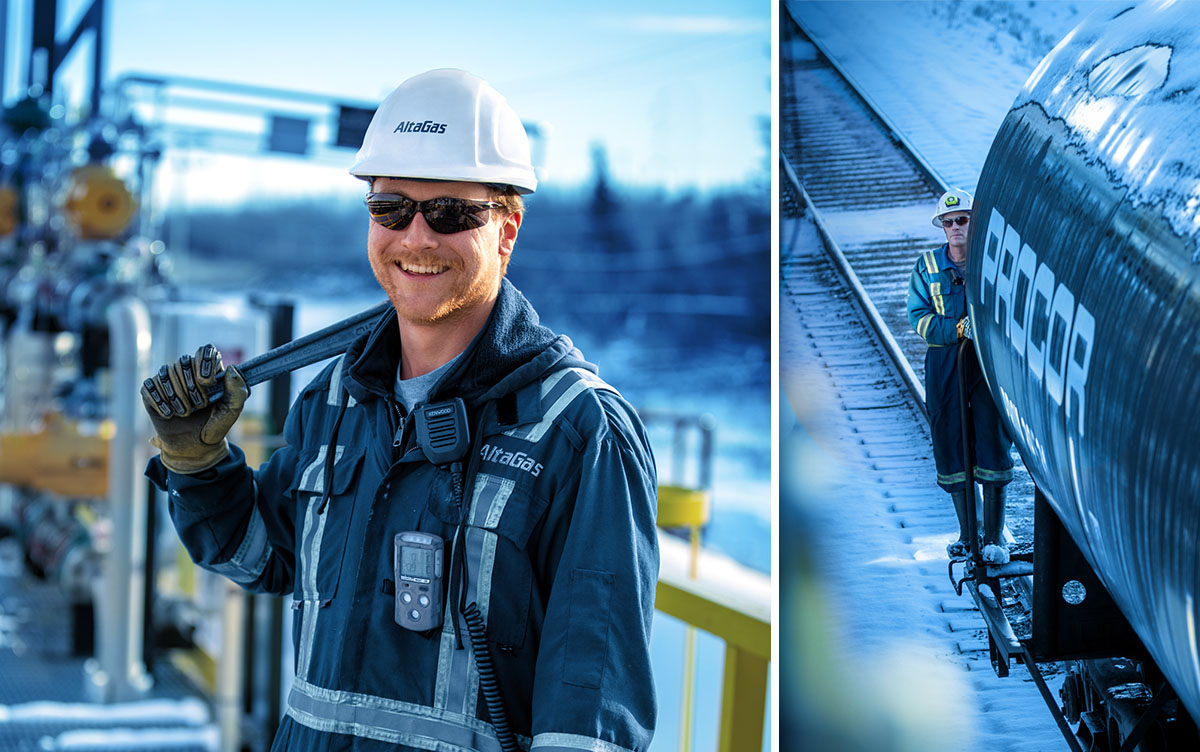A look at cold weather operations

January 31, 2023
Working in cold temperatures can be a challenging and demanding task, especially when the mercury dips below -40 degrees Celsius (°C).
While most avoid the outdoors at such frigid temperatures, many of our AltaGas team members brave the elements to ensure the safety and reliability of our operations. In late December 2022, Western Canada experienced sustained record low temperatures, including at our operations in Northeastern (NE) British Columbia. (B.C.)
Teams at our North Pine Facility in NE B.C. are accustomed to working in extreme temperatures, ranging from +30°C in July to -51°C with wind chill in December.
Trevor Bergen, Senior Operator, at North Pine is used to the extreme temperatures. “Riding on the back of the train you can add another 15 km/hr of windchill,” he says. “At these extreme low temperatures the trains’ rubber brake hoses become extremely stiff and it’s like you are trying to bend steel pipe. Diesel fuel is rated for -45°C and then starts to gel which requires keeping vehicles that move rail cars in the shop when not in use.”

According to Environment Canada, exposed skin can freeze in under 10 minutes when it dips below -40. For those who work outside, additional personal protective equipment (PPE) and frequent warming breaks are recommended. We also encourage our teams to have constant observation through a supervisor or buddy system and to adjust the pace of work to avoid sweating, resulting in wet clothing.
Thank you to our teams in NE B.C. and throughout our operations for their dedication to safe and reliable operations, no matter the weather.
